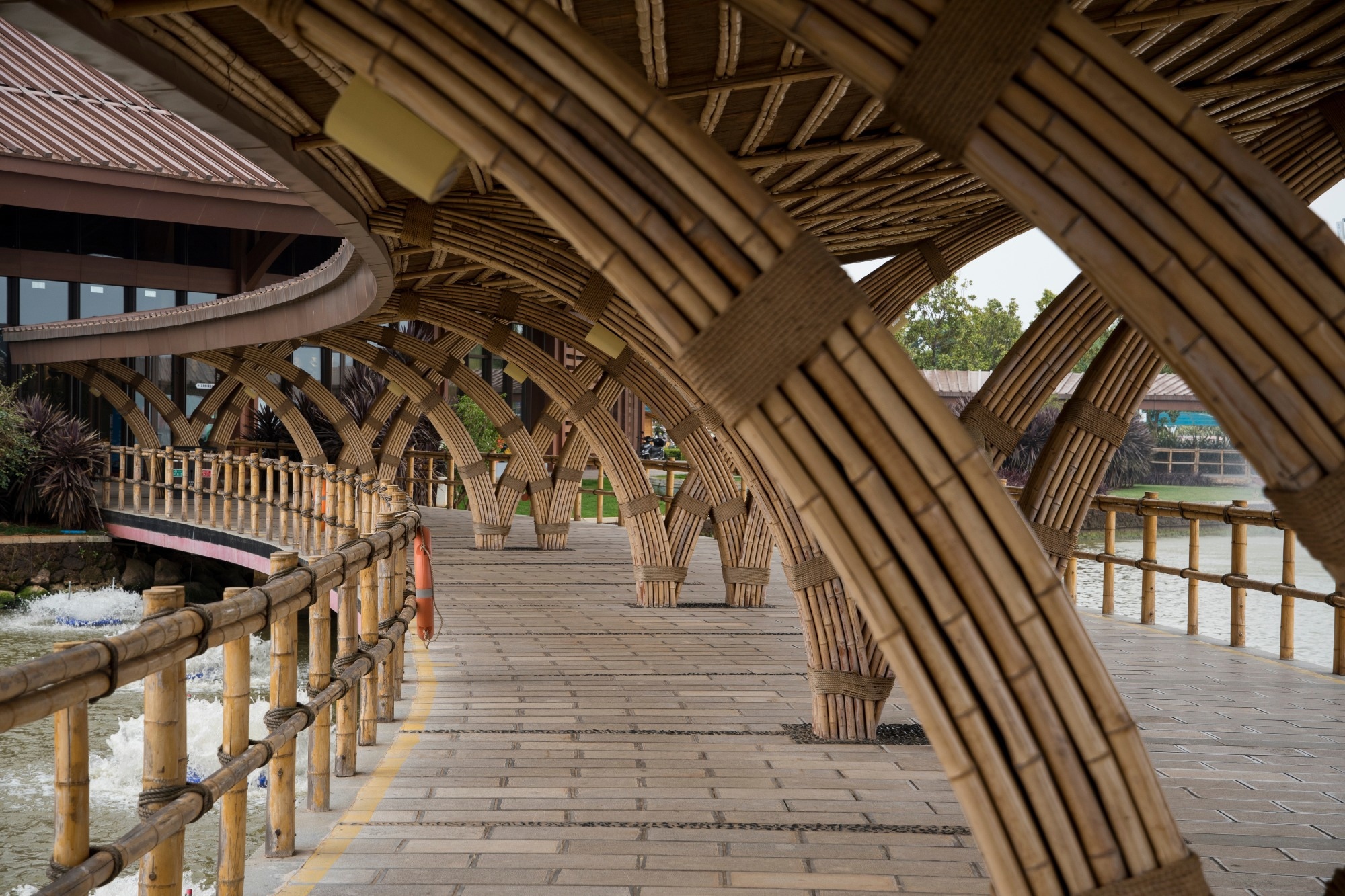 By Nidhi DhullReviewed by Susha Cheriyedath, M.Sc.Apr 24 2024
By Nidhi DhullReviewed by Susha Cheriyedath, M.Sc.Apr 24 2024An article recently published in Advances in Bamboo Science introduced an innovative method for monitoring bamboo structures. This method uses remotely piloted aircraft systems (RPAS) and artificial vision to identify critical issues. It was developed as part of a collaborative project on the fiscal implications of structural reforms (FISR) between China and Italy.
 Study: Bamboo Structure Monitoring with RPAS and Artificial Vision. Image Credit: Flying a Hippo/Shutterstock.com
Study: Bamboo Structure Monitoring with RPAS and Artificial Vision. Image Credit: Flying a Hippo/Shutterstock.com
Background
Bamboo has recently gained attention as a building material due to its unique properties, such as rapid growth, easy cultivation, flexibility, lightweight, and sustainability. However, its widespread adoption in construction is limited by durability challenges. As a natural material, bamboo is vulnerable to attacks from insects and animals, as well as to environmental elements like rain and sunlight.
To address these issues, tailored treatments, precise precautions, and regular structural inspections are essential. These measures help detect potential degradation early and take appropriate action, thus ensuring the longevity of bamboo structures. Artificial intelligence and machine learning are increasingly being used in structural health monitoring to detect variations or anomalies and identify potential problems. These technologies can also predict structural deterioration using historical data and other relevant environmental and structural parameters.
Furthermore, disseminating information about bamboo structures to a broad audience—including infrastructure management personnel and individuals interested in its potential—is crucial for promoting its use in sustainable construction. Dedicated virtual, augmented, and mixed reality applications (VR/AR/MR) can be employed to digitalize and share this information in real time.
Methods
This study focused on a bamboo-roofed structure located at the entrance of Zhejiang University, China. The research involved several steps: surveying the structure, creating a 3D model from images, and incorporating this model and other structural data into a VR/AR/MR application for analysis.
Survey and 3D Modeling: Initially, the structure was surveyed using a DJI Mavic 2 Pro drone equipped with a GPS-integrated high-resolution camera to geotag each photo and capture precise location data. The images were then processed using Agisoft Metashape, a commercial software employing the Structure from Motion (SfM) algorithm. This allowed for the reconstruction of a point cloud and the creation of a detailed and accurate 3D model of the structure.
Monitoring System Implementation: Subsequently, a monitoring system using the YOLO (You Look Only Once) v5s6 algorithm was implemented. This deep learning object detection model is open-source, customizable, and known for its speed and accuracy in real-time object detection. Its integration with drone technology facilitates the detection of structural deteriorations and the identification of issues in bolted joints.
VR/AR/MR Application for Analysis: Finally, an application developed by the authors was used to analyze various aspects of the bamboo structure. Utilizing the Microsoft HoloLens tool, the app displays a hologram of the structure's survey phases, enhancing the monitoring and management system's performance. This allows for in-depth analysis and detailed views of the components without physical presence. Additionally, the app serves as a tool for disseminating information about the potential uses of bamboo in structural engineering.
Results
The initial drone survey, conducted over 30 minutes, captured 459 photos. These were processed into a detailed 3D model using Agisoft Metashape software over a period of 7.2 hours. The resulting model was then imported into a VR/AR/MR application, where the metal joints of the structure were analyzed and categorized as either deteriorated (showing signs of slips and breakages) or non-deteriorated.
A technical sheet detailing the materials used or a structural Building Information Modeling (BIM) file can be generated from the app, facilitating easy sharing with multiple users simultaneously. This feature not only aids in disseminating crucial information but also enhances collaborative efforts in structural assessment.
The VR/AR/MR app provides an immersive and interactive platform for maintenance operators and other stakeholders to explore the intricate details of bamboo structures without being physically present. This capability significantly reduces the need for travel and limits exposure to potentially hazardous or inaccessible areas.
Furthermore, the integration of data from the YOLO detection system enhances the accuracy of the app's structural condition assessments. This precision is crucial for the timely planning of maintenance and intervention, ensuring the safety and extending the lifespan of bamboo structures. The app's real-time monitoring capabilities also allow for the prompt identification of issues such as loose bolts, further bolstering structural safety.
Conclusion
The methodologies implemented in this study have proven effective for surveying and evaluating a bamboo roof structure in China. Utilizing an automated, deep learning-based model, this research effectively captured and identified structural deteriorations through bounding boxes. Notably, the extended processing times highlight the complexity of the structure and the depth of the data captured.
To reduce these processing times, the authors recommend employing parallel computations, which distribute the workload across multiple processors, enhancing efficiency and speed. This technological approach not only expedites the analysis but also improves data handling capabilities.
The geomatics techniques applied in this study prove essential for monitoring bamboo structures, effectively addressing issues related to structural fragility and limitations in bamboo applications. Moreover, this research underscores the potential of bamboo as an eco-friendly building material and advocates for its broader use in sustainable construction practices.
Journal Reference
Barrile, V., & Genovese, E. (2024). Bamboo Structures: Innovative Methods and Applications for Structural Health Monitoring and Dissemination. Advances in Bamboo Science, 100079–100079. https://doi.org/10.1016/j.bamboo.2024.100079, https://www.sciencedirect.com/science/article/pii/S2773139124000247
Disclaimer: The views expressed here are those of the author expressed in their private capacity and do not necessarily represent the views of AZoM.com Limited T/A AZoNetwork the owner and operator of this website. This disclaimer forms part of the Terms and conditions of use of this website.